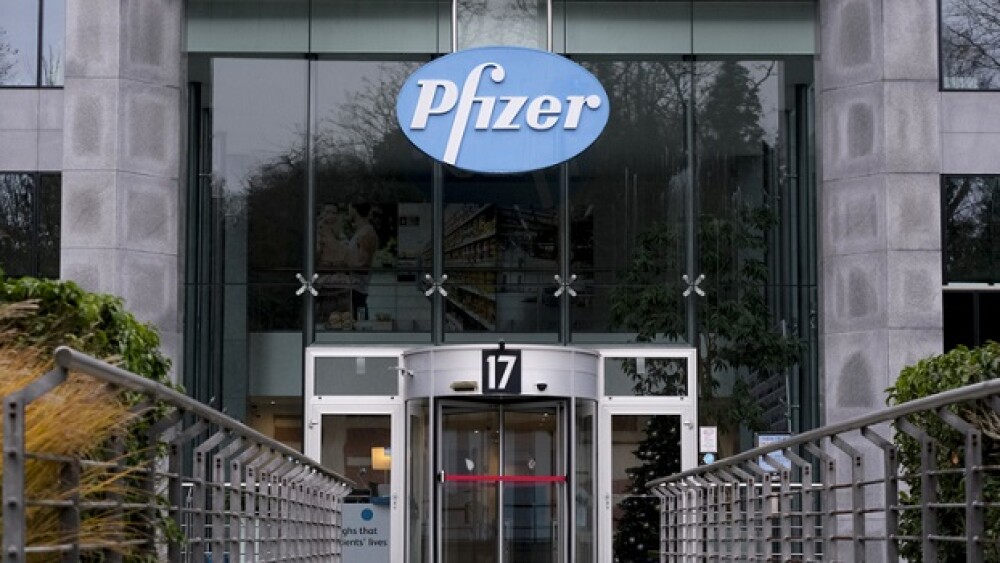Aimmune Therapeutics, Inc., a Nestlé Health Science company developing pharmaceutical therapies to prevent, manage, and treat food, gastrointestinal (GI), and metabolic-related diseases, today announced the publication of new clinical data from a pooled analysis of three controlled phase 3 (PALISADE, RAMSES, ARTEMIS) and two open-label extension trials (ARC004, ARC011) of PALFORZIA®
— Results from the Largest Safety Data Analysis of a Single Oral Immunotherapy Formulation for Peanut Allergy Showed a Consistent and Manageable Safety Profile Over Time with PALFORZIA Treatment —
— Adverse Events Were Predominantly Mild to Moderate —
BRISBANE, Calif.--(BUSINESS WIRE)-- Aimmune Therapeutics, Inc., a Nestlé Health Science company developing pharmaceutical therapies to prevent, manage, and treat food, gastrointestinal (GI), and metabolic-related diseases, today announced the publication of new clinical data from a pooled analysis of three controlled phase 3 (PALISADE, RAMSES, ARTEMIS) and two open-label extension trials (ARC004, ARC011) of PALFORZIA® [Peanut (Arachis hypogaea) Allergen Powder-dnfp] in the Journal of Allergy and Clinical Immunology (JACI).
These results, which represent the largest safety data analysis of a single oral immunotherapy (OIT) formulation for peanut allergy, showed a consistent and manageable safety profile with continued PALFORZIA treatment. The manuscript, titled “Safety of Peanut (Arachis hypogaea) Allergen Powder-dnfp in Children and Teenagers with Peanut Allergy: A Pooled Summary of Phase 3 and Extension Trials,” was also published online. A summary highlighting key findings from the manuscript was also published in JACI online.
PALFORZIA was approved as an oral immunotherapy (OIT) for the mitigation of allergic reactions, including anaphylaxis, that may occur with accidental exposure to peanut for patients aged 4 to 17 years with a confirmed diagnosis of peanut allergy on January 31, 2020 by the U.S. Food and Drug Administration (FDA), on December 17, 2020 by the European Commission (EC), on April 7, 2021 by the Medicines and Healthcare products Regulatory Agency (MHRA) in the U.K., and on May 4, 2021 by Swissmedic. Use of PALFORZIA may be continued in patients 18 years of age and older. PALFORZIA is not indicated for the emergency treatment of allergic reactions, including anaphylaxis and must always be used in conjunction with a peanut-avoidant diet.
Boxed WARNING: PALFORZIA can cause anaphylaxis, which may be life threatening and can occur at any time during PALFORZIA therapy. Prescribe injectable epinephrine, instruct and train patients on its appropriate use, and instruct patients to seek immediate medical care upon its use. Do not administer PALFORZIA to patients with uncontrolled asthma.
Please see U.S. Important Safety Information and Boxed WARNING below, or for full Prescribing Information, including Boxed WARNING and Medication Guide, visit www.PALFORZIA.com.
“This study demonstrated clinically meaningful desensitization to peanut after PALFORZIA treatment, with a consistent and manageable safety profile,” said Stephen Tilles, Head, Global Medical Affairs, Allergy at Aimmune. “The findings from this pooled analysis will provide a valuable resource for allergists to facilitate discussions with their patients and caregivers impacted by peanut allergy as they consider whether treatment with PALFORZIA may be right for them.”
Key highlights from the analysis include:
- Across the controlled and open-label trials, 944 participants received ≥1 PALFORZIA dose and were subject to this analysis.
- 770 (83.8%) patients completed the updosing phase.
- The exposure-adjusted adverse event (AE) rate was highest during the two-day initial dose escalation (IDE) (272.2 events/person-years exposure (PYE), n=944) and decreased to a rate of 14.9 events/PYE (n=45 at 79-91 weeks of 300-mg PALFORZIA treatment).
- The most frequently reported AEs, including treatment-related adverse events (TRAEs), adjusted for exposure, were primarily respiratory or GI in nature.
- Across all dosing phases (IDE and updosing), 497 (52.6%) PALFORZIA-treated participants experienced TRAEs with a maximum severity Common Toxicity Criteria for Adverse Events (CTCAE) grade of mild (grade 1), and 332 (35.2%) experienced TRAEs with a maximum severity of moderate (grade 2).
- 24 participants (2.5%) experienced TRAEs that were severe (grade 3).
- During the updosing phase, AEs of any severity were more common at lower PALFORZIA doses (3-80 mg) than higher doses (≥120 mg).
- The rates of AEs during IDE and updosing were similar across the randomized, controlled PALISADE, RAMSES, and ARTEMIS trials.
- Observation of in-clinic dosing revealed that onset and resolution of AEs occurred rapidly.
- Within the integrated populations, the median times from PALFORZIA administration to symptom onset varied from four to eight minutes; median times from onset of first symptom to resolution of last symptom varied between 15 to 30 minutes.
- In the controlled population, which included both active- and placebo-treated participants from PALISADE, RAMSES, and ARTEMIS, the use of epinephrine was higher in participants treated with PALFORZIA (n=80/841; 9.5%) than in participants treated with placebo (n=15/335; 4.5%).
- Most events of epinephrine use occurred during IDE and updosing with both PALFORZIA and placebo.
- Episodes of AEs where epinephrine was administered were generally mild or moderate in severity, occurred primarily during the first six months of treatment, and only a single epinephrine dose was used.
- In the maintenance phases for PALISADE and ARTEMIS, the proportion of PALFORZIA-treated participants who received epinephrine was 7.7% (n=24/310) and 3.7% (n=4/108), respectively, and 3.4% (n=4/118) and 0% (n=0/41) of placebo-treated participants, respectively.
- Across the controlled population, the proportion of participants reporting accidental peanut exposure was lower in the PALFORZIA group compared with placebo.
- Additionally, fewer participants in the active groups in PALISADE and ARTEMIS experienced AEs due to accidental peanut exposure requiring treatment compared with placebo during the maintenance period.
- None of the PALFORZIA-treated participants received epinephrine to treat the associated AEs following peanut allergen exposure whereas three placebo treated participants received epinephrine following accidental peanut exposure.
INDICATION
PALFORZIA is an oral immunotherapy indicated for the mitigation of allergic reactions, including anaphylaxis, that may occur with accidental exposure to peanut. PALFORZIA is approved for use in patients with a confirmed diagnosis of peanut allergy. Initial Dose Escalation may be administered to patients aged 4 through 17 years. Up-Dosing and Maintenance may be continued in patients 4 years of age and older.
PALFORZIA is to be used in conjunction with a peanut-avoidant diet.
Limitations of Use: Not indicated for the emergency treatment of allergic reactions, including anaphylaxis.
IMPORTANT SAFETY INFORMATION
Boxed WARNING:
PALFORZIA can cause anaphylaxis, which may be life threatening and can occur at any time during PALFORZIA therapy.
Prescribe injectable epinephrine, instruct and train patients on its appropriate use, and instruct patients to seek immediate medical care upon its use.
Do not administer PALFORZIA to patients with uncontrolled asthma.
Dose modifications may be necessary following an anaphylactic reaction.
Observe patients during and after administration of the Initial Dose Escalation and the first dose of each Up-Dosing level, for at least 60 minutes.
PALFORZIA is available only through a restricted program called the PALFORZIA REMS.
CONTRAINDICATIONS
PALFORZIA is contraindicated in patients with uncontrolled asthma, or with a history of eosinophilic esophagitis and other eosinophilic gastrointestinal disease.
WARNINGS AND PRECAUTIONS
Anaphylaxis
PALFORZIA can cause anaphylaxis, which may be life threatening. PALFORZIA is available only through a restricted program under a Risk Evaluation and Mitigation Strategy (REMS) called the PALFORZIA REMS because of the risk of anaphylaxis. Only prescribers, healthcare settings, pharmacies, and patients certified and enrolled in the REMS Program can prescribe, receive, dispense or administer PALFORZIA.
Anaphylaxis has been reported during all phases of PALFORZIA dosing, including Maintenance and in subjects who have undergone recommended Up-Dosing and dose modification procedures.
Do not initiate PALFORZIA treatment in a patient who has had severe or life-threatening anaphylaxis within the previous 60 days. PALFORZIA may not be suitable for patients with certain medical conditions that may reduce the ability to survive anaphylaxis, including but not limited to markedly compromised lung function, severe mast cell disorder, or cardiovascular disease. In addition, PALFORZIA may not be suitable for patients taking medications that can inhibit or potentiate the effects of epinephrine.
All Initial Dose Escalation doses and the first dose of each Up-Dosing level must be administered in a certified health care setting.
Patients may be more likely to experience allergic reactions following PALFORZIA administration in the presence of cofactors such as exercise, hot water exposure, intercurrent illness (e.g., viral infection), or fasting. Other potential cofactors may include menstruation, sleep deprivation, nonsteroidal anti-inflammatory drug use, or uncontrolled asthma. Patients should be proactively counseled about the potential for the increased risk of anaphylaxis in the presence of these cofactors. If possible, adjust the time of dosing to avoid these cofactors. If it is not possible to avoid these cofactors, consider withholding PALFORZIA temporarily.
Asthma
Uncontrolled asthma is a risk factor for a serious outcome, including death, in anaphylaxis. Ensure patients with asthma have their asthma under control prior to initiation of PALFORZIA.
PALFORZIA should be temporarily withheld if the patient is experiencing an acute asthma exacerbation. Following resolution of the exacerbation, resumption of PALFORZIA should be undertaken cautiously. Re-evaluate patients who have recurrent asthma exacerbations and consider discontinuation of PALFORZIA.
Eosinophilic Gastrointestinal Disease
Discontinue PALFORZIA and consider a diagnosis of eosinophilic esophagitis in patients who experience severe or persistent gastrointestinal symptoms, including dysphagia, vomiting, nausea, gastroesophageal reflux, chest pain, or abdominal pain.
Gastrointestinal Adverse Reactions
Gastrointestinal adverse reactions were commonly reported in PALFORZIA-treated subjects, and dose modification should be considered for patients who report these reactions. For severe or persistent gastrointestinal symptoms consider a diagnosis of eosinophilic esophagitis.
ADVERSE REACTIONS
The most common adverse events reported in subjects treated with PALFORZIA (incidence ≥ 5% and ≥ 5% than placebo) are abdominal pain, vomiting, nausea, oral pruritus, oral paresthesia, throat irritation, cough, rhinorrhea, sneezing, throat tightness, wheezing, dyspnea, pruritus, urticaria, anaphylactic reaction, and ear pruritus.
Please see full Prescribing Information, including Boxed WARNING, and Medication Guide at www.PALFORZIA.com.
For more information about PALFORZIA, please call 1-844-PALFORZ (1-844-725-3679) or visit www.PALFORZIA.com.
About Aimmune
Aimmune Therapeutics, Inc., a Nestlé Health Science Company, is a biopharmaceutical company developing and commercializing pharmaceutical therapies to prevent, manage, and treat food and metabolic-related diseases, including gastrointestinal conditions. Aimmune has one FDA- and EU-approved medicine for peanut allergy and other investigational therapies in development. For more information, please visit www.aimmune.com.
About Nestlé Health Science
Nestlé Health Science (NHSc), a wholly owned subsidiary of Nestlé, is a globally recognized leader in the field of nutritional science. At NHSc we are committed to empowering healthier lives through nutrition for consumers, patients and their healthcare partners. We offer an extensive consumer health portfolio of industry-leading medical nutrition, consumer and vitamins, minerals and supplements (VMS) brands that are science-based solutions covering all facets of health from prevention to maintenance, all the way through to treatment. NHSc is redefining the way we approach the management of health in several key areas such as pediatric health, allergy, acute care, oncology, metabolic health, healthy aging, gastrointestinal health, and inborn errors of metabolism. Headquartered in Switzerland, NHSc employs over 5,000 people around the world who are committed to making a difference in people's lives, for a healthier today and tomorrow. www.nestlehealthscience.com.
PALFORZIA®, AIMMUNE® and AIMMUNE THERAPEUTICS® are trademarks of Aimmune Therapeutics, Inc.
View source version on businesswire.com: https://www.businesswire.com/news/home/20220216005945/en/
Source: Aimmune Therapeutics, Inc.





